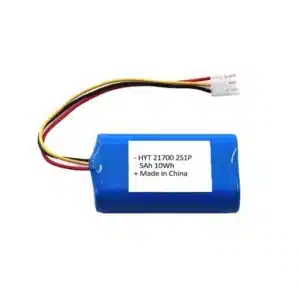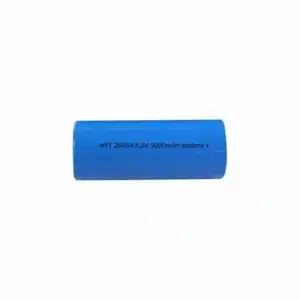RV Battery
RV batteries are mainly used to power recreational vehicles, providing electricity for various devices inside the vehicle. Choosing the right battery is crucial.
There are 3 main types of RV batteries: Flooded Lead Acid Battery, AGM Battery, and LiFePO4 Battery. Each has its own advantages and disadvantages. We are a Chinese manufacturer of LiFePO4 batteries. Feel free to contact us for lithium battery for camper.

Deep Cycle Capability
Provides stable power output for a long time, with good performance under deep discharge conditions.
Cold & Heat Resistance
Due to the high-temperature resistance of LiFePO4, it can provide power supply even in extreme conditions.
High Energy Density
LiFePO4 has an energy density of 80Wh/kg, allowing more energy to be stored in a smaller volume.
Long Lifespan
Lithium-ion batteries can cycle more than 6000 times, with a lifespan of 8-10 years.
lithium camper battery product
Based on the size, voltage, capacity, and power of the customer’s RV battery compartment, we recommend different LiFePO4 batteries. All our batteries come from domestic LiFePO4 brands, ensuring quality and reasonable prices.
Below are the 12V, 24V, 36V, and 48V RV batteries we produce. In addition to the shown models, as an RV battery manufacturing factory, we can produce any model you need.
- RV Batteries Deep Cycle
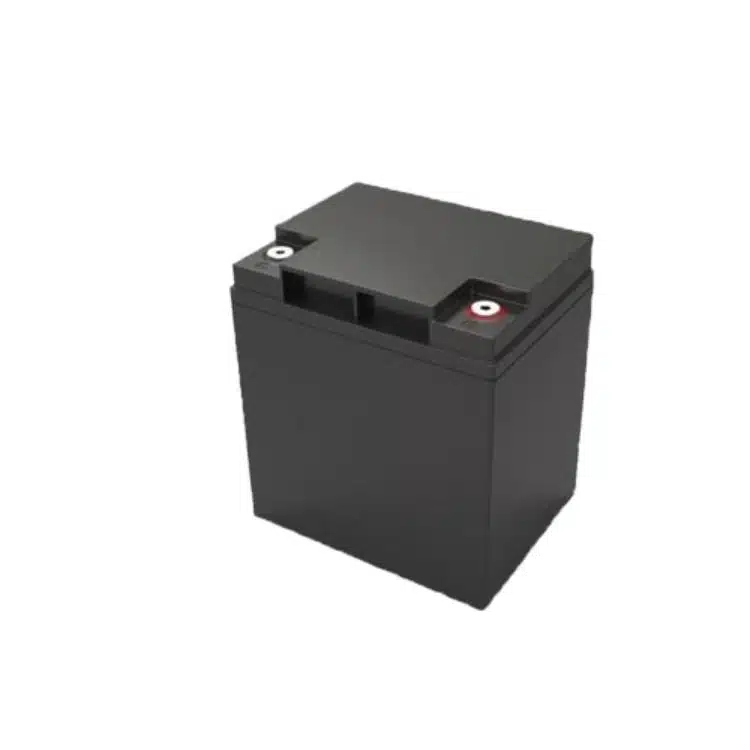
12.8V 30Ah LiFePo4 Battery
Nominal voltage: 12.8V
Nominal capacity: 30Ah
Rated energy: 384Wh
Recommend charge current: ≤15A
Peak discharge current: 60A
Internal resistance: ≤30mΩ
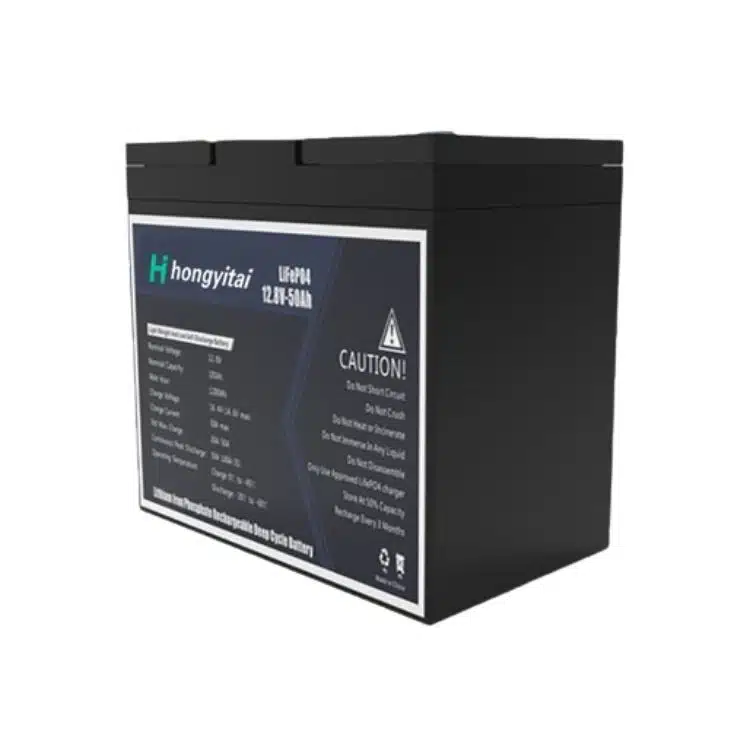
12.8V 50Ah LiFePo4 Battery
Nominal voltage: 12.8V
Nominal capacity: 50Ah
Rated energy: 640Wh
Recommend charge current: ≤25A
Max charge current: 100A
Internal resistance: ≤15mΩ
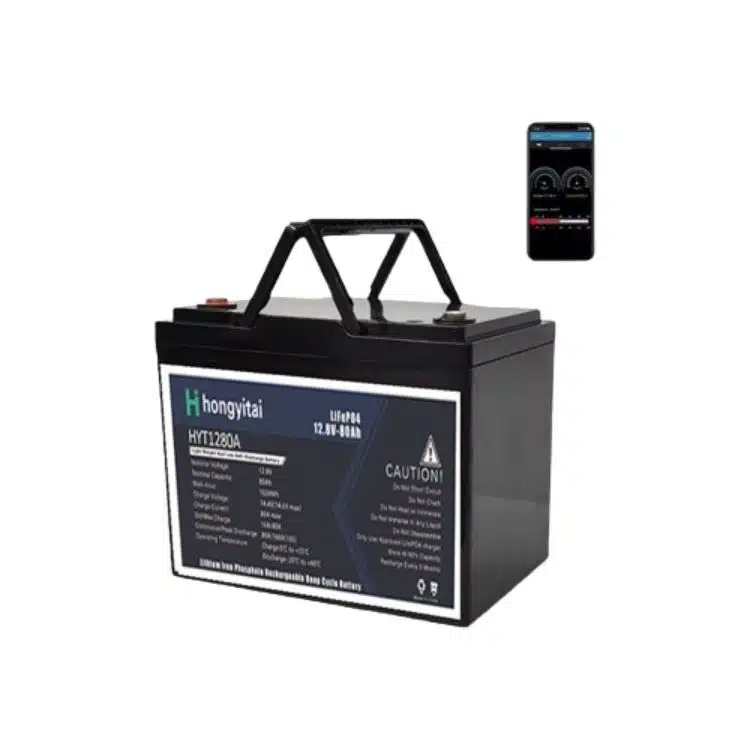
12.8V 80Ah LiFePo4 Battery
Nominal voltage: 12.8V
Nominal capacity: 80Ah
Rated energy: 1024Wh
Recommend charge current: ≤40A
Max charge current: 160A
Internal resistance: ≤12mΩ

12.8V 100Ah LiFePo4 Battery
Nominal voltage: 12.8V
Nominal capacity: 100Ah
Rated energy: 1280Wh
Recommend charge current: ≤50A
Max charge current: 200A
Internal resistance: ≤10mΩ
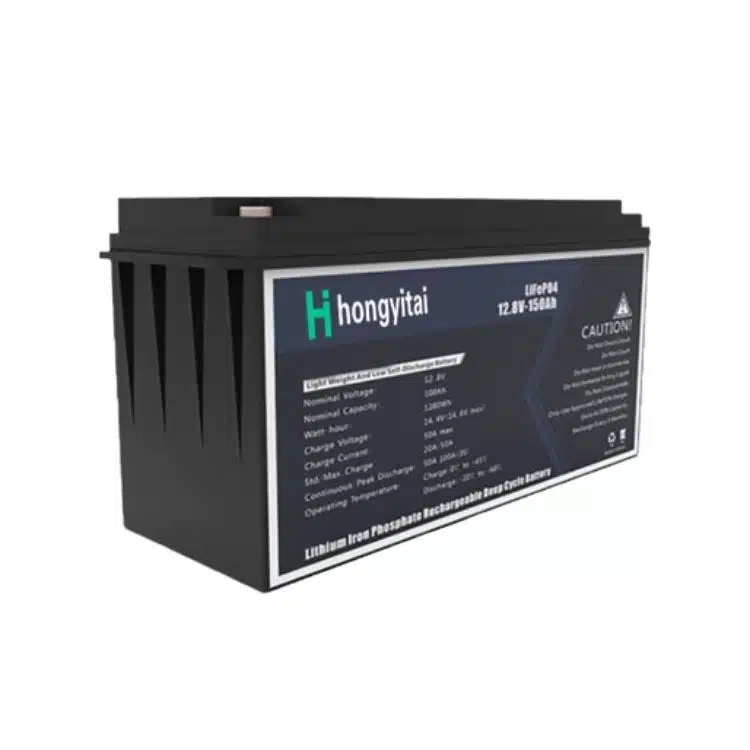
12.8V 150Ah LiFePo4 Battery
Nominal voltage: 12.8V
Nominal capacity: 150Ah
Rated energy: 1920Wh
Recommend charge current: ≤100A
Max charge current: 300A
Internal resistance: ≤10mΩ
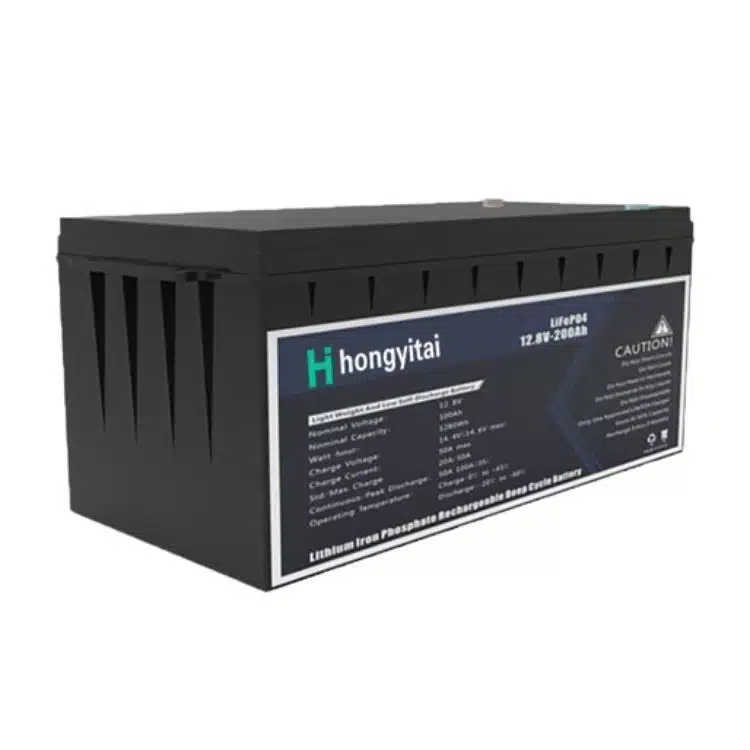
12.8V 200Ah LiFePo4 Battery
Nominal voltage: 12.8V
Nominal capacity: 200Ah
Rated energy: 2560Wh
Recommend charge current: ≤100A
Max charge current: 200A
Internal resistance: ≤10mΩ
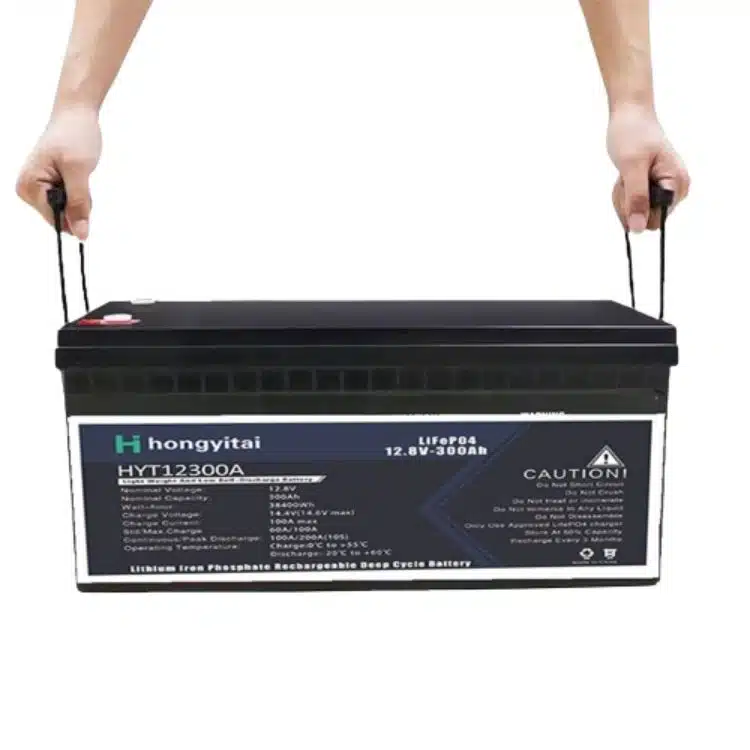
12.8V 300Ah LiFePo4 Battery
Nominal voltage: 12.8V
Nominal capacity: 300Ah
Rated energy: 3840Wh
Recommend charge current: ≤80A
Max charge current: 200A
Internal resistance: ≤10mΩ

12.8V 400Ah LiFePo4 Battery
Nominal voltage: 12.8V
Nominal capacity: 400Ah
Rated energy: 5120Wh
Recommend charge current: ≤50A
Max charge current: 100A
Internal resistance: ≤12mΩ
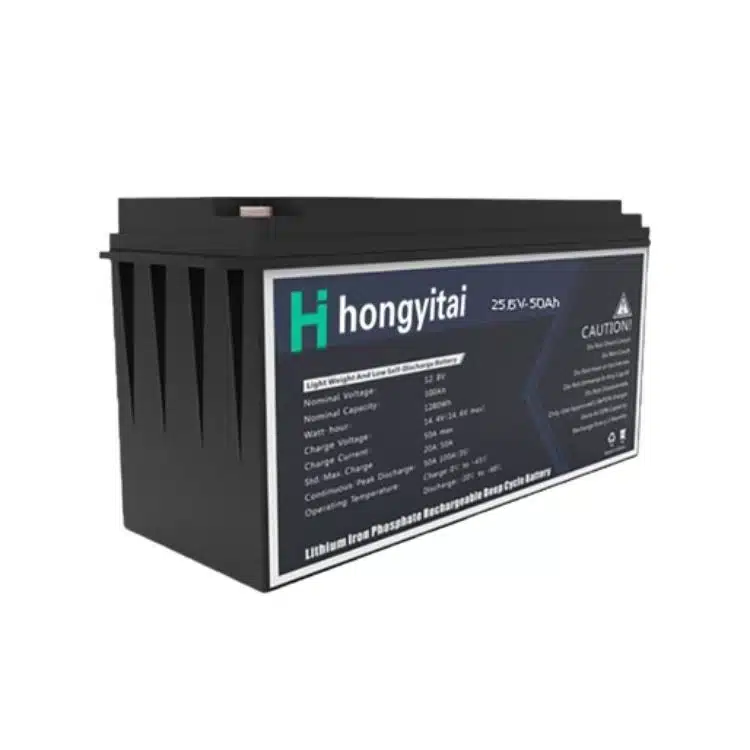
24V 50Ah LiFePo4 Battery
Nominal voltage: 25.6V
Nominal capacity: 50Ah
Rated energy: 1280Wh
Recommend charge current: ≤25A
Peak discharge current: 100A
Internal resistance: ≤20mΩ

24V 100Ah LiFePo4 Battery
Nominal voltage: 25.6V
Nominal capacity: 100Ah
Rated energy: 2560Wh
Recommend charge current: ≤50A
Peak discharge current: 200A
Internal resistance: ≤15mΩ
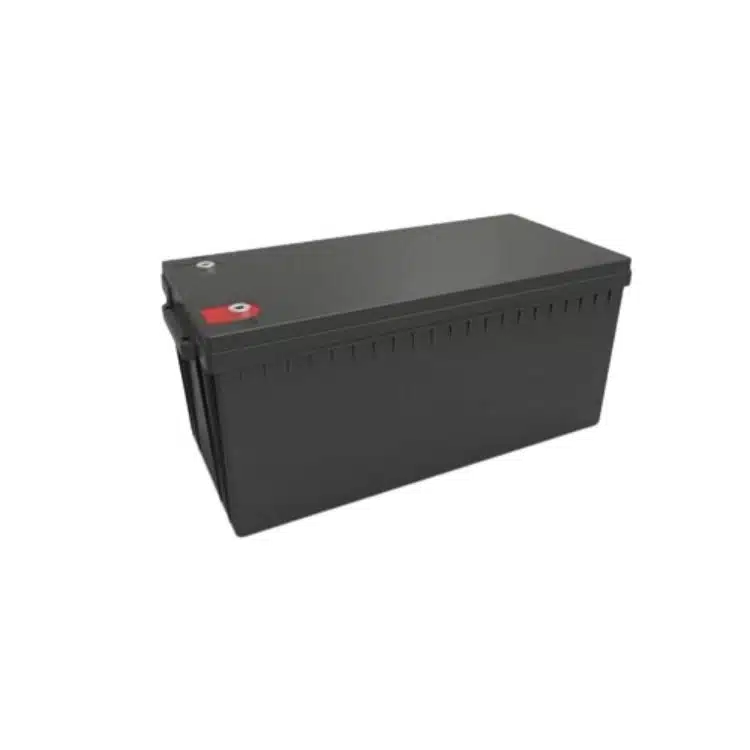
24V 150Ah LiFePo4 Battery
Nominal voltage: 25.6V
Nominal capacity: 150Ah
Rated energy: 3840Wh
Recommend charge current: ≤50A
Peak discharge current: 200A
Internal resistance: ≤15mΩ

24V 200Ah LiFePo4 Battery
Nominal voltage: 51.2V
Nominal capacity: 200Ah
Rated energy: 5120Wh
Recommend charge current: ≤80A
Peak discharge current: 200A
Internal resistance: ≤15mΩ
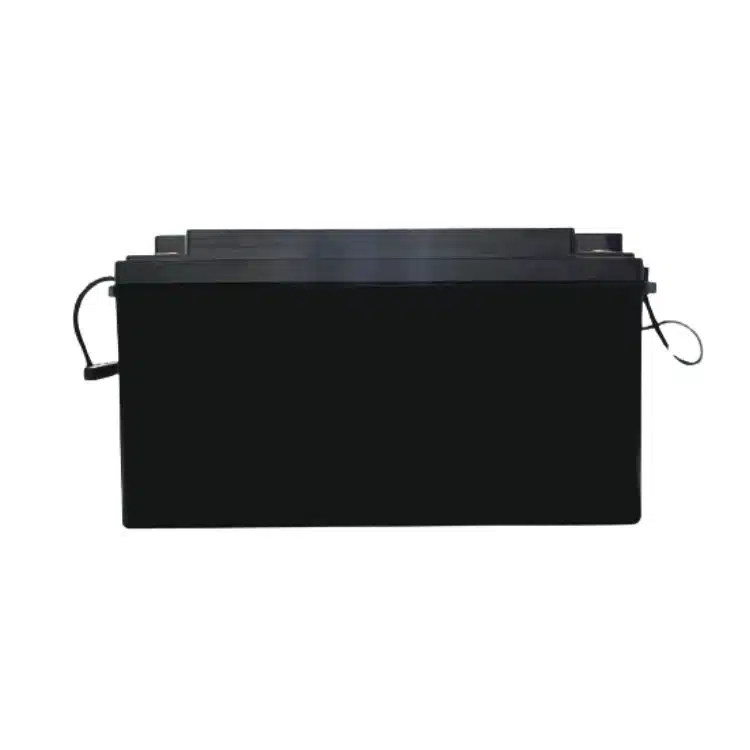
36V 50Ah LiFePo4 Battery
Nominal voltage: 38.4V
Nominal capacity: 50Ah
Rated energy: 1920Wh
Recommend charge current: ≤25A
Peak discharge current: 100A
Internal resistance: ≤30mΩ
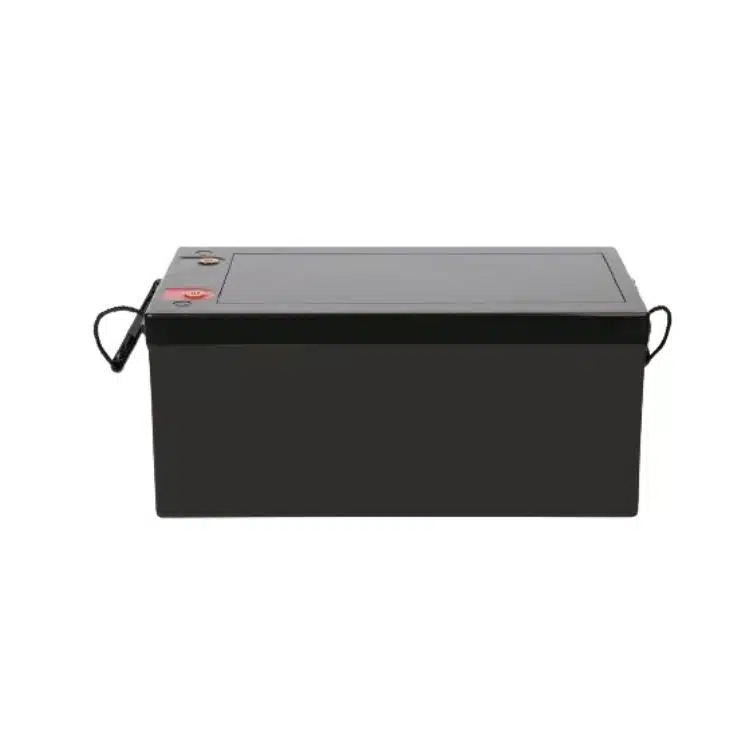
36V 100Ah LiFePo4 Battery
Nominal voltage: 38.4V
Nominal capacity: 100Ah
Rated energy: 3840Wh
Recommend charge current: ≤50A
Peak discharge current: 200A
Internal resistance: ≤25mΩ
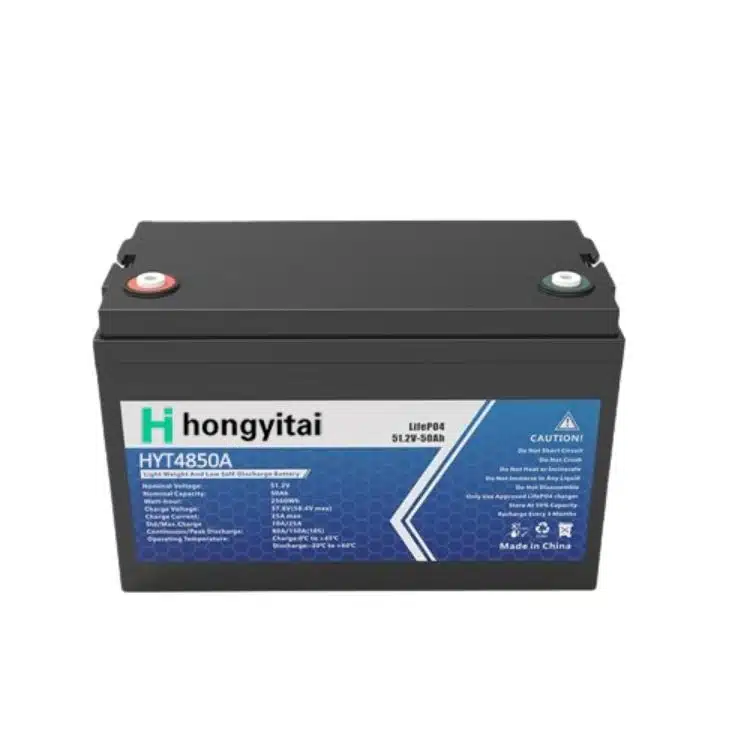
48V 50Ah LiFePo4 Battery
Nominal voltage: 51.2V
Nominal capacity: 50Ah
Rated energy: 2560Wh
Recommend charge current: ≤25A
Peak discharge current: 100A
Internal resistance: ≤30mΩ
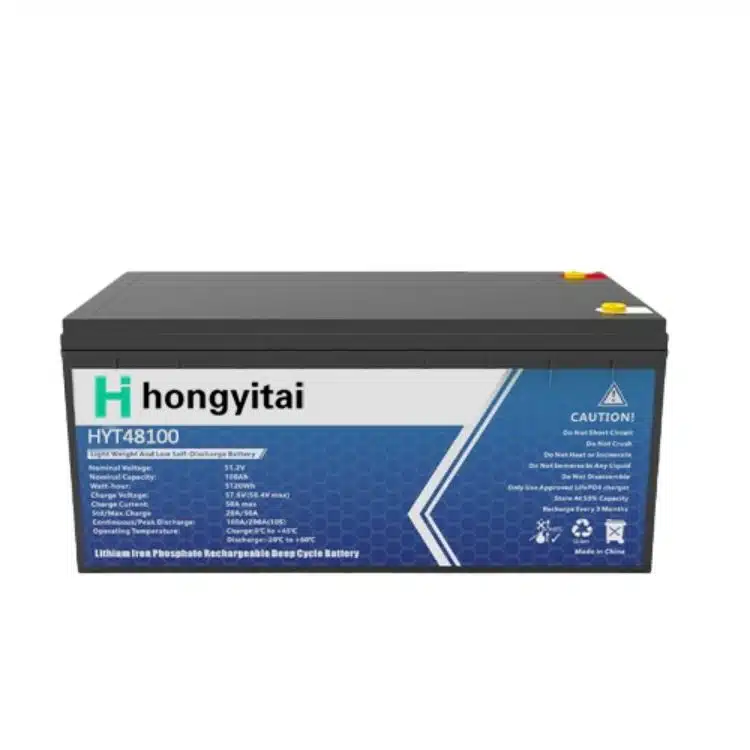
48V 100Ah LiFePo4 Battery
Nominal voltage: 51.2V
Nominal capacity: 100Ah
Rated energy: 5120Wh
Recommend charge current: ≤50A
Peak discharge current: 200A
Internal resistance: ≤20mΩ
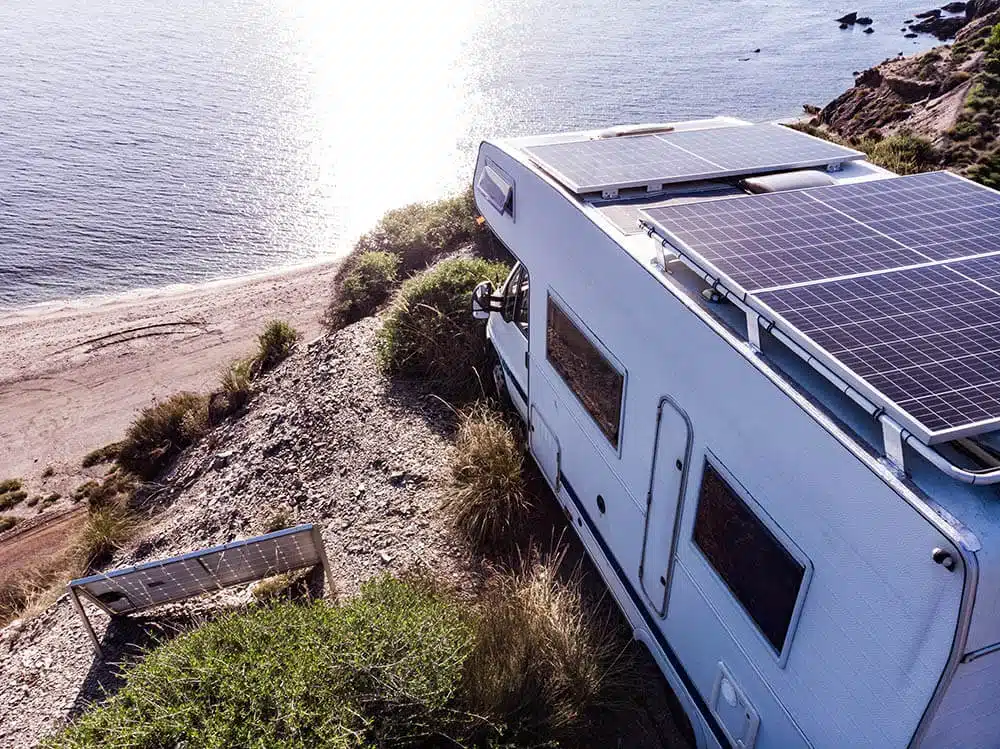
Advantages of lithium batteries for rv
1. Lightweight. Lithium batteries are three-twelfths the weight of traditional lead-acid batteries, and the overall weight of the battery compartment is smaller, which is conducive to improving the overall performance.
2. Long life. The service life of lithium battery is much higher than that of lead-acid battery, which can be as long as 8-10 years, and in daily operation, it only needs to be charged and discharged, with no other maintenance cost.
3. Fast charging. It supports 2-3 hours to be fully charged, which shortens the charging time and improves the operation efficiency.
4. High available capacity. The maximum capacity of single unit is 400Ah, in addition, our lithium batteries support up to 16 and expand capacity.
5. Low Maintenance. No need to add water and daily inspection, no additional maintenance costs.
6. Safety. Li-ion batteries are safer than lead-acid batteries and do not produce harmful gases.
RV Battery Replacement Guide
Before replacing lithium ion battery for camping, you need to prepare the following: Preparation tools: new battery, wrench, battery terminals, safety gloves, insulating materials Confirm the basic information of the current battery: voltage, capacity, output terminals, size, current, etc. Replacing the battery Steps to replace the battery are as follows:
- Turn off all power sources connected to the battery.
- Disconnect the negative (black) cable terminal, then disconnect the positive (red) cable terminal.
- Carefully remove the old battery from the battery compartment.
- Place the new battery in the battery compartment and ensure it is secured.
- Connect the positive (red) cable terminal first, then connect the negative (black) cable terminal.
- Ensure all cables and connections are safe and secure.
- It is best to measure the battery voltage to ensure it is normal before connecting other electronic devices.
Safety precautions
When replacing the battery, pay attention to the following safety precautions:
- Handle the battery and cables carefully to avoid accidental contact or short circuits.
- Use safety gloves and goggles to protect yourself from electric shock or other injuries.
- Ensure all power sources are turned off to avoid accidental startup or electric shock.
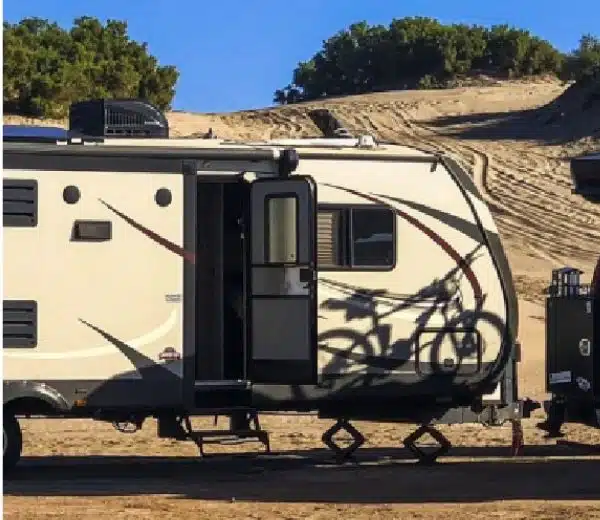

How to select correct rv battery charger
Choosing the right RV battery charger is crucial for maintaining the health and longevity of your RV battery. Here are several key factors to consider when selecting an RV battery charger:
Automatic Voltage Detection: The automatic voltage detection feature ensures that the charger can automatically detect the battery’s voltage and select the appropriate charging mode.
Compatibility: Consider a compatible charger that can support lithium iron phosphate batteries, AGM batteries, and lead-acid batteries.
Automatic Charging: The charger will automatically stop working when the battery is fully charged to prevent overcharging.
Charging Modes: There are three main charging modes: fast charging, standard charging, and charging stations.
Safety Features: Ensure the charger has safety features such as overcharge protection, over-discharge protection, short-circuit protection, and over-temperature protection.
Ease of Use: Choose a charger that is easy to use, with a clear display and simple operation interface.
FAQs for deep cycle rv batteries
When charging RV batteries, pay attention to the following safety precautions:
- Avoid overcharging: Overcharging can lead to battery damage and reduced lifespan.
- Charge and discharge shallowly: Keep the battery around 20% charge and avoid charging it to 100%.
- Use a safe charger: Ensure the charger has safety features such as overheat protection, short circuit protection, and overload protection.
- Check the battery: Regularly inspect the battery's condition, including voltage, current, and temperature.
You can charge the battery while the RV is connected to shore power, but it's important to ensure you use the correct charger and settings. Here are some factors to consider:
- Ensure the RV's converter can correctly convert the shore power's AC (alternating current) to DC (direct current) for battery charging.
- Use the correct charger and set it properly to avoid overcharging or undercharging.
- Ensure the battery is properly connected and in good condition.
In conclusion, you can charge the battery while the RV is connected to shore power, but you need to use the correct charger and settings. You may also consider using an external charger or solar panels to charge the battery.
Generally, traditional lead-acid batteries have a lifespan of 1-2 years, while deep cycle batteries can last 3-6 years. Lithium iron phosphate batteries can last 8-10 years or even longer.
To extend the lifespan of RV batteries, it is recommended to regularly check the battery voltage, monitor capacity degradation, and practice shallow charging and discharging.
If your RV battery is not charging when connected to shore power, there may be several reasons. Here are some possible causes and solutions:
- Lack of AC power: Ensure your RV is connected to shore power and that the AC power source is working correctly.
- RV converter malfunction: Check if your RV converter is functioning properly.
- Battery connection issues: Ensure the battery terminals are securely connected.
- Battery issues: Measure the battery's output voltage and internal resistance to ensure they are normal.
Of course, we can help you with inquiries about lithium batteries and connection terminals.
Yes, it is workable to replace a lead-acid battery with a lithium battery. Lithium batteries have advantages such as longer lifespan, lighter weight, and higher energy density, making them an ideal replacement for RV batteries.
Here are the steps to replace an RV battery:
- Check battery compatibility: Verify the type, voltage, capacity, current, size, and connection method of your existing battery.
- Choose a suitable lithium battery: Select a lithium battery with the appropriate capacity and voltage to meet your RV battery needs.
- Install the lithium battery: Follow our specifications and installation instructions to ensure correct connections.
- Test the battery: Before connecting the RV and other devices, test the battery voltage to ensure normal output.
In summary, you can replace an RV battery with a lithium battery, but you need to consider battery compatibility, installation requirements, and battery testing to ensure it works properly.

